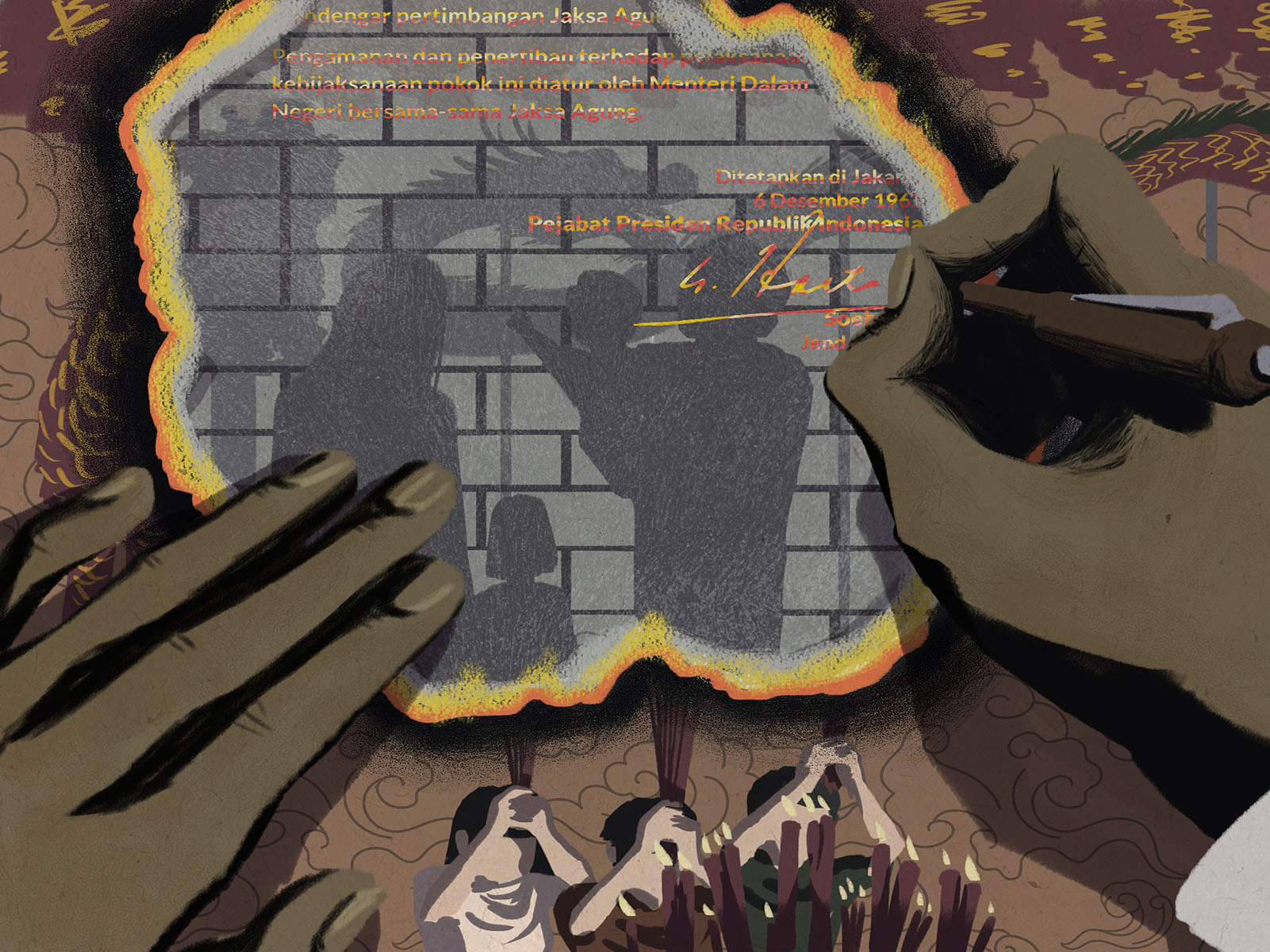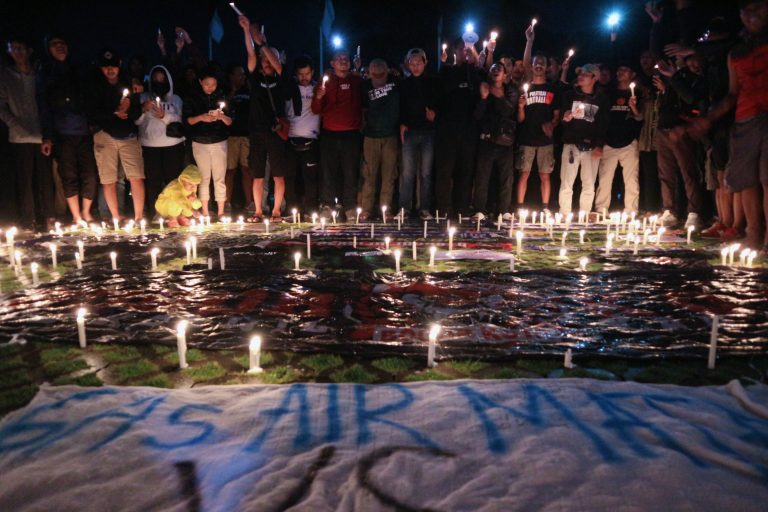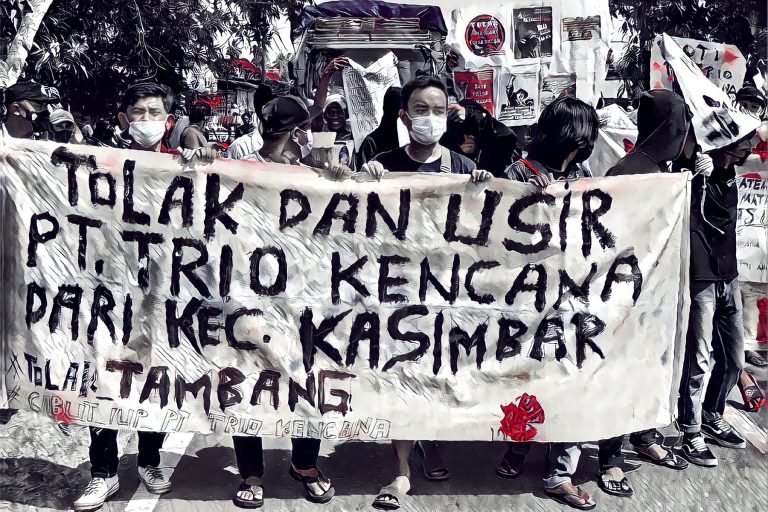Warning: This article may be distressing or triggering to some readers.
More than 27 years after Soeharto’s downfall, the state has become increasingly blatant in its efforts to whitewash the past by erasing the violent and painful chapters of history involving the Chinese-Indonesian community.
May 1998 was the moment when I began to associate the word “Chinese-Indonesian” with “violence” and “rape”.
At the end of elementary school, it was the first time I was forced to be afraid of my identity both as a woman and as a Chinese-Indonesian, and I was frustrated because I did not understand how I ended up feeling that way. I knew almost nothing about the history of Chinese-Indonesians that led to the May 1998 riots. That ignorance made it even harder for me to understand my own emotions.
My parents also didn’t explain much. “The most important thing is, as a Chinese-Indonesian, you always have to be cautious. You can’t just say whatever you want, especially when it comes to politics,” they said.
For years I carried a pile of unanswered questions in my head. Who am I? Who is my family? What is Chinese-Indonesian? How is it that other holidays are marked with red-letter dates and celebrated festively, except for Chinese New Year? Why must we learn Mandarin in secrecy, while other regional languages can be studied freely? What really happened? Why did being Chinese start to feel wrong?
The turning point came in 2009. After graduating from university, I worked as a journalist for Suara Baru, an internal media of the Chinese-Indonesian Association (INTI) that was formed in 1999.
Even though I only worked there briefly, my time opened many doors for me to learn more deeply about Chinese-Indonesian issues and meet several Chinese-Indonesians who were directly involved in social and political work. Slowly, I began to find answers to the many questions that had haunted me for so long. Those answers were often shocking and heartbreaking.
I began to understand that the history of Chinese-Indonesians in this country is almost inseparable from the history of violence, which has often been systematically orchestrated by those in power since the VOC era. This systematic violence has spanned hundreds of years and is not only physical but also epistemic, taking the forms of neglect, concealment, and even denial of many historical facts, especially the darker parts of history.
I came to realize that the New Order regime carried out a systematic epistemicide against the Chinese-Indonesian community. The state deliberately stripped away knowledge about the history of my own ethnicity, uprooting me and other Chinese-Indonesians from our cultural roots, leaving me confused and struggling to process my own position and feelings.
As a result, I began to understand that the New Order never really died. More than 27 years after Soeharto’s downfall, the state has become increasingly blatant in its efforts to whitewash the past by erasing the violent and painful chapters of history involving the Chinese-Indonesian community.
This became very clear with a statement made by Culture Minister Fadli Zon on June 10, 2025. In an interview with IDN Times about the project to rewrite national history, Fadli referred to the mass rape of May 1998 as a “rumor” that had no proof.
His statement made my stomach turn. My chest tightened. Tears streamed down uncontrollably.
The History of Violence and ‘Disciplining’
“This is insane! How could the riots get out of control?”
My mother said that with panic etched across her face, appalled as scene after scene of apocalyptic brutality flashed endlessly across the television screen in front of us.
Fires raged and smoke filled the air. Physical clashes led to gunfire that killed without hesitation. Clenched fists went up and down as people screamed and scattered in all directions. Buildings and vehicles were covered in ash. Smooth highways turned into battlegrounds clouded with dust.
Unfortunately, we were not watching an action movie. It was real life that pierced straight into the Chinese-Indonesian community in the blink of an eye, leaving behind open wounds that have never fully healed.
Even more unfortunate, this was not the first time that a tragedy like this had happened to Chinese-Indonesians.
A number of historical milestones demonstrate how racism and discrimination against the Chinese-Indonesian community have manifested in their most extreme forms, including acts that amount to literal genocide. These include brutal massacres, rape, mutilations, and live immolations of Chinese-Indonesians.
These events include the 1740 Batavia Massacre; anti-Chinese massacres during the Indonesian National Revolution from 1946 to 1949; violence following the issuance of Presidential Regulation No. 10/1959 prohibiting Chinese-Indonesians from rural trade; the 1965 tragedy; and of course the May 1998 riots that included looting, burglary, and the mass rape of Chinese-Indonesian women.

These incidents occurred at the national level, but we have yet to fully address the widespread anti-Chinese violence at regional and sub-regional levels, where scale of brutality was no less appalling. For instance, the mass slaughter and rape of members of the Benteng Chinese community in Tangerang in June 1946, and the Mergosono tragedy in Malang in July 1947, which claimed the lives of at least 30 Chinese-Indonesians. In my own hometown, Bandung, several anti-Chinese riots have also occurred, including those on May 10, 1963 and August 5, 1973.
The repeated episodes of violence were made possible by the persistence of stereotypes that can be tracked back centuries like “Chinese-Indonesians are nothing but economic animals who only care about their own interest and benefits” and “Chinese-Indonesians are exclusive”.
During the Dutch colonial rule, Chinese-Indonesians were classified as Eastern Foreigners within the colonial demographic hierarchy. They were assigned the role of distribution intermediaries for daily necessities, serving both the colonial administration and the Malay-descended locals, whom the Dutch labeled as pribumi (a pejorative term that means “native”). This was a dilemmatic position that the Chinese-Indonesian community was compelled to occupy, whether they liked it or not.
Slowly but surely, a majority of Chinese-Indonesians (forcibly) ended up working in commerce and trade, a situation that bred resentment among the so-called pribumi, who came to see them as selfish profiteers.
After Indonesia declared independence, successive regimes carefully preserved these negative sentiments. Leaders appeared to understand how useful it was to deflect attention from their own failures by scapegoating the Chinese-Indonesians, portraying them as the root of the nation’s economic problem. The narrative was simple: “Chinese-Indonesians are greedy, so everything is their fault.”
During Sukarno’s era, the government enacted many discriminatory policies against Chinese-Indonesians that continued colonial legacies. A particularly controversial policy was the Presidential Regulation No. 10/1959, which banned Chinese-Indonesians from running retail businesses in rural areas. The military involvement in the implementation of the regulation led to major unrest that claimed the lives of many Chinese-Indonesians and massive exodus.
The 1965 tragedy, which paved the way for the rise of the New Order regime, also disproportionately targeted Chinese-Indonesians. As a communist state, China was accused of supporting the uprising and, thus, Chinese-Indonesians were automatically suspected of complicity. This logical fallacy led to the arrest and imprisonment of many Chinese-Indonesian figures who had actively contributed to Indonesia’s independence struggle. Ordinary Chinese-Indonesians suffered the most, especially with the closure of schools and constant fear of persecution.
During the New Order regime, the authoritarian president Soeharto reproduced colonial-era discriminatory tactics. He stripped Chinese-Indonesians of their access to and rights within practical politics, while granting privileges to a select few tycoons whom he considered loyal allies. This strategy ensured that all economic resources remained concentrated within the New Order’s circle of power, while Chinese-Indonesians continued to play essential roles in the economy even though they were never fully trusted. Therefore, writer Pramoedya Ananta Toer described the Chinese-Indonesian community as a “minority without political muscle”.
The New Order regime obliterated the history of the Chinese-Indonesian community’s roles and contributions to the nation-building process from various official references, before introducing new narratives that portrayed them as mere “foreign guests”—temporary residents whose rights could be easily revoked. Chinese-Indonesians were consistently constructed as “a problem” that needed to be surveilled and “solved” to avoid being seen as a threat to the country.
From there emerged a number of assimilationist policies that prohibited the use of Chinese names, as well as the Mandarin language and script. Chinese-Indonesians were banned from publicly displaying their religious, spiritual and cultural practices. At the same time, all Chinese-Indonesian media, political and social organizations, as well as Chinese-language schools were disbanded.
These discriminatory policies effectively laid the foundation for long-term racism, uprooting the Chinese-Indonesian identity to its very core and depriving the future generation of knowledge of the ethnic group’s history. The regime deliberately created distance between younger Indonesians and the collective memory of Chinese-Indonesians’ valuable contributions to the nation-building process. Even when some members of the new generations chose to become critical of the regime’s narratives and attempted to uncover the true history of Chinese-Indonesians, trauma and lack of reliable sources caused members of the ethnic group to remain silent.
This fear-based culture and knowledge, instilled by the regime, ended up being affirmed and embraced by generations of Indonesians, even by the Chinese-Indonesians.
In his Master’s thesis for Lund University in 2017, Roy Thaniago explicitly described how the Chinese-Indonesian community was being “disciplined” during the New Order regime through manipulation of media narratives. These narratives were crafted to ensure the community’s total obedience to the authorities to the point where the Chinese-Indonesians willingly disciplined and monitored their own behavior into submission.
In the end, the knowledge and culture that belong to Chinese-Indonesians today are nothing more than a product of state government violence. Centuries of systematic oppression have instilled fear so deeply that it can no longer be seen as just an individual issue. It has turned into a collective problem which has triggered intergenerational trauma.
This explains why my parents repeatedly reminded me that, as someone of Chinese-descent living in Indonesia, I always have to be extra careful. Careful with what I say, careful with how I act—because anything we say or do could backfire and put us in danger, no matter how good our intentions were. Whenever I find myself in a potential conflict with a non-Chinese, my parents always ask me to back down because even if I’m right, Chinese-Indonesians will always be seen as wrong, and will always lose in the end.
My parents also reminded me to study diligently, work hard, and focus on achieving academic and professional achievements—especially because in this country, Chinese-Indonesians are often valued only for their wealth.
Chinese-Indonesians are pressured to be financially generous, even though only a small number of us are truly wealthy. We are also expected to constantly prove our contributions just to be recognized as legitimate members of this country, even though it often feels like running a race with no finish line.
Epistemicide
I grew up in a Chinese-Indonesian family that is still deeply rooted in Chinese culture, yet I never truly experienced what it is like to see Chinese-Indonesian traditions publicly celebrated, let alone embraced in a deep and meaningful way.
Throughout the New Order period, the only major Chinese tradition my family celebrated that left a lasting impression on me was Chinese New Year. Even then, we could only celebrate it in the evening after my father came home from working long hours at a factory, physically exhausted, because Chinese New Year had not yet been recognized as a national holiday.
During that period, my parents also continued to observe several other Chinese-Indonesian traditions in private, but they never made any effort to pass them down to their children.
When I was in elementary school, my parents made an effort to teach me Mandarin themselves. At one point, they even asked me to join a Mandarin “course” held at a Christian church whose congregation was mostly Chinese-Indonesians. Of course, at that time, I didn’t understand why learning Mandarin had to be done discreetly in a church. Unfortunately, since I never use the language in daily interactions, I ended up forgetting much of the Mandarin vocabulary as I grew older.
At first, I didn’t care. But later, I realized that it was all the result of Soeharto’s discriminatory policies, which had a profound impact on me and many other Chinese-Indonesians.
For instance, I haven’t been able to trace my own family’s history because I struggled to understand my parents’ archived documents and letters, most of which were written in traditional Mandarin script. Yet the documents are the closest sources for me to understand my family history as well as the broader context of Chinese-Indonesian history as a whole.
Because my younger siblings and I did not understand Chinese customs, my father made a major decision. In 2007, he and his younger sister (my aunt) decided to exhume their parents’ graves. The bongpai, or gravestone, was destroyed, and the remaining bones were collected and cremated on the spot. They then scattered the ashes into the open sea. In their eyes, this was the best course of action, so that their children and grandchildren would not be burdened with maintaining traditions or tending graves, which can be costly.
For most Chinese families, graves carry far more cultural significance than simply being a final resting place. They are considered sacred, a symbolic tribute of respect for ancestors, a marker of identity, and a site of pilgrimage for future generations. To dismantle a grave is to erase a symbol of identity and lose the opportunity to honor and remember ancestral stories.
The dismantling of the grave is the perfect metaphor for the erasure of Chinese-Indonesian historical footprints, which was part of the epistemicide systematically carried out by the New Order regime.
As explained by Beth Patin, a professor of library and information science, epistemicide is “the killing, silencing, annihilation, or devaluing of a knowledge system”. According to her, epistemicide occurs when epistemic injustices take place persistently and systematically, collectively working as a structured and systemic oppression of particular ways of knowing.
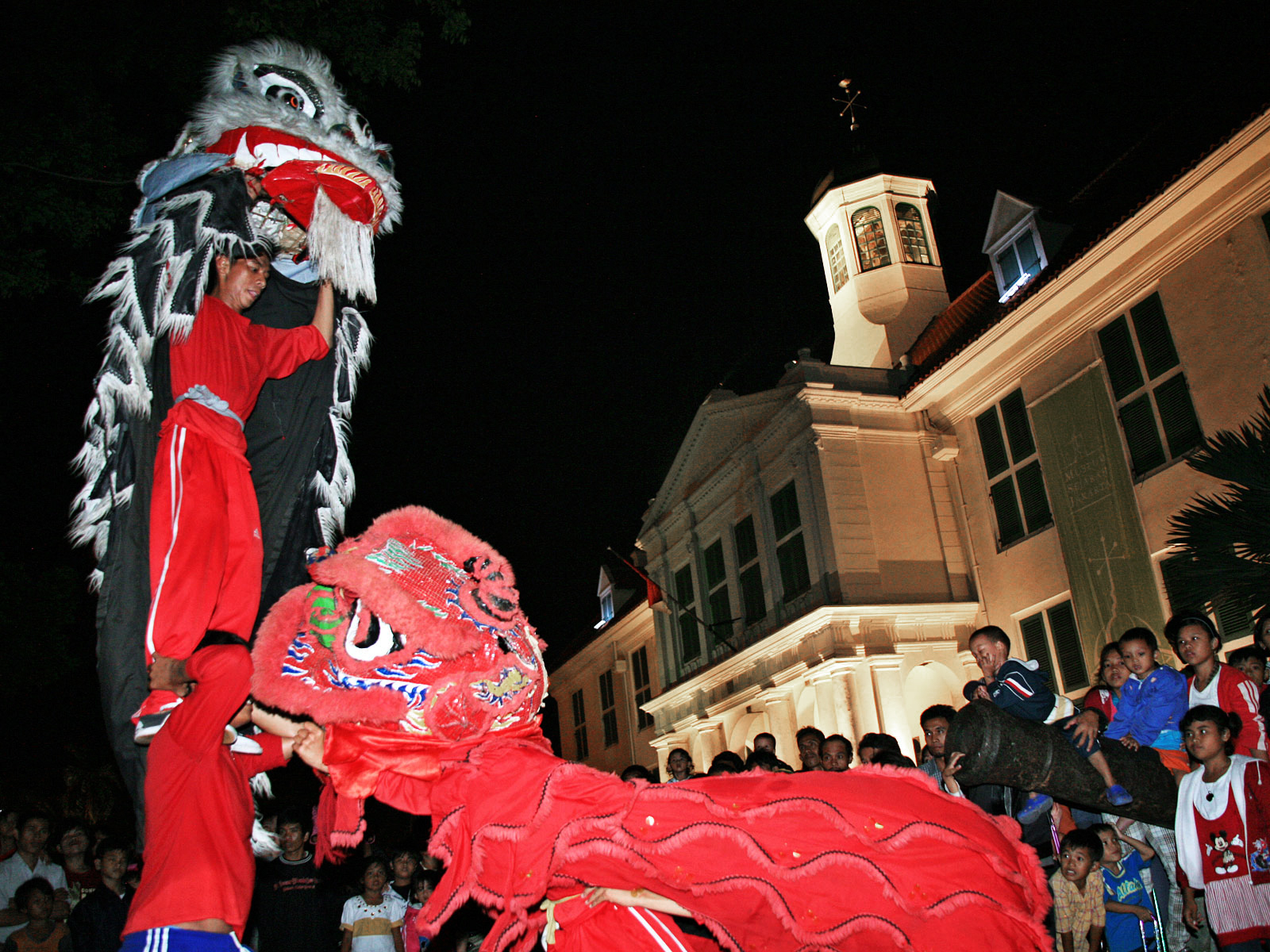
It’s disheartening to see how many Chinese-Indonesians today know next to nothing about the important roles their ancestors once played in politics, society, media, arts, or culture. Even in the sports sector, few are aware that Chinese-Indonesians have contributed not only to badminton but also to soccer.
In August 2024, I had the privilege of discussing this topic with Astrid Reza, a researcher from the Women’s Archive and History Center (RUAS). She said that historical writing about the Chinese-Indonesian community remains rare. As a result, it will take a much longer process for anyone to uncover, layer by layer, the knowledge that was subjected long ago to a form of epistemicide by those in power.
Not to mention those who attempt to uncover the truth about their own history must contend with deeply rooted New Order narratives about Chinese-Indonesians, along with waves of paid social media operatives working to preserve the narratives.
And, just as importantly, some Chinese-Indonesians remain hesitant to learn their own history.
“The New Order not only effectively obliterated the collective memory and knowledge related to Chinese-Indonesians, but also succeeded in killing the awareness of how important that knowledge is,” Astrid said.
“The greatest success [of epistemicide] is when even Chinese-Indonesians themselves become reluctant to learn about their own history. All it takes is silencing two or three generations, and entire bodies of knowledge, even the awareness of the importance of having that knowledge, will disappear.”
Understanding the Trauma of Chinese-Indonesians
Before Culture Minister Fadli Zon dismissed the mass rapes of May 1998 as a “rumor”, several political statements and events had already signaled the continued vulnerability of Chinese-Indonesians.
In 2016, Basuki Tjahaja Purnama, also known as Ahok, who was then serving as the governor of Jakarta, was accused of blasphemy after someone edited his speech quoting a verse from the Quran, uploaded the doctored clip to social media, and spread it with a misleading narrative. Large-scale anti-Chinese protests soon followed. Although the blasphemy charges were never truly proven, Ahok who is both Chinese and Christian, was sentenced to nearly two years.
For many of my Chinese-Indonesian friends, the massive protests instantly triggered bitter memories related to the May 1998 riots. One of them who felt this was Anastasia Satriyo, a Chinese-Indonesian who works as a child and adolescent psychologist.
“It’s as if my body is having a panic attack. I can’t watch the news about [anti-Chinese] issues for too long, just getting the gist of it is enough for me. I’ve realized that watching news related to these issues could cause me to stop functioning. On top of that, I always feel some tightening sensation in my chest every time I hear people shouting anti-Chinese sentiments,” Anastasia said.
“I always wonder, why is there always prejudice against Chinese-Indonesians?”
Anies Baswedan, who succeeded Ahok as governor of Jakarta, seemed to further inflame the situation. In his inauguration speech, he explicitly used the term “pribumi” (a pejorative term meaning “native”) and contrasted it with “non-pribumi“. Historically, these terms were used by the Dutch colonial government to divide the society along ethnic lines.
Anies earned his master’s degree at the University of Maryland and his PhD at Northern Illinois University. Therefore, many people believed he knew exactly the history behind those politicized terms, and it was no coincidence that he chose to use them. It is important to note that the use of “pribumi” and “non-pribumi” had officially been abolished by B.J.Habibie’s administration in 1998.
Eight years after the Ahok incident, Prabowo Subianto came to power. Prabowo, a former son-in-law of Soeharto, is widely believed to be involved in the forced disappearance of several activists in 1998.
It didn’t take long for his regime to reveal its true colors. On October 21, 2024, after being sworn in as Coordinating Minister of Law, Human Rights, Immigration and Correctional Services, Yusril Ihza Mahendra said what happened in May 1998 “was not a gross human rights violation”.
This came despite former President Joko Widodo’s acknowledgment in 2023 of 12 past gross human rights violations, including the 1965 tragedy and the May 1998 riots.
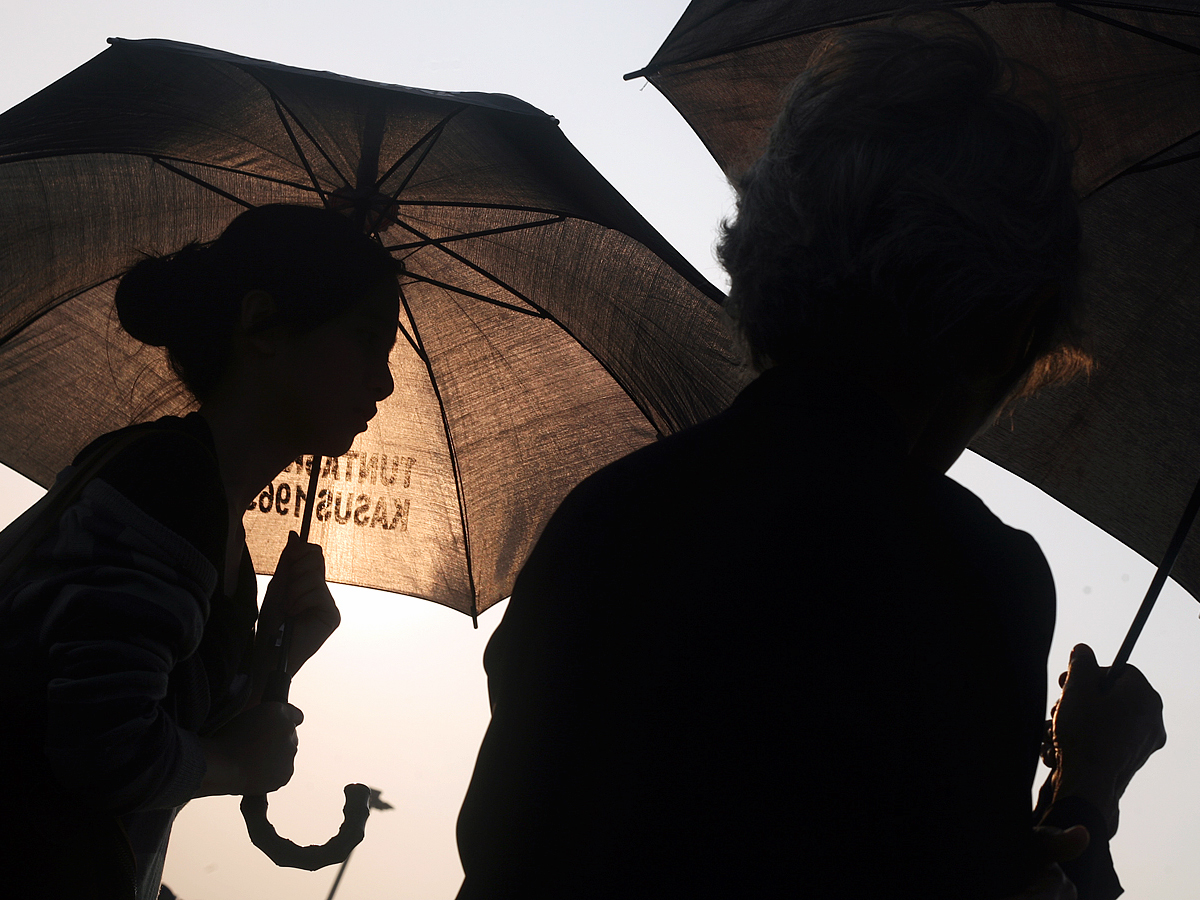
But it didn’t end there. My frustration and that of many other Chinese-Indonesians reached a boiling point when Fadli questioned the truth of the May 1998 mass rapes.
The first thing that came to my mind at that time was Ita Martadinata Haryono, a victim and young activist brutally murdered by those who couldn’t bear the thought of having their vile crimes exposed on the international stage. Ita was killed just before she was scheduled to testify about the mass rape in the United Nations forum.
Fadli’s words were incredibly cruel. He truly spat on the victims, witnesses and volunteers of the May 1998 tragedy, especially the women and Chinese-Indonesian community who, to this day, continue to carry the trauma, both directly and indirectly.
How can the findings of the Joint Fact-finding Team (TGPF), which clearly confirmed that a series of brutal gang rape took place in public spaces during May 1998, be denied simply because of “lack of evidence”?
Why insist on a legalistic argument which lacks empathy to defend himself? How is it possible to obtain evidence that requires victim testimony when the state offers no assurance of protection for the witnesses and survivors courageous enough to speak out?
That’s why, even though I wasn’t a direct victim, Fadli’s words threw me into emotional turmoil. My stomach turned. My chest tightened. Tears streamed down uncontrollably.
According to psychologist Anastasia, intergenerational trauma often manifests physically. When someone experiences trauma, their body’s DNA responds by activating certain genes and hormones to help the individual cope whether by confronting the threat (fight), escaping it (flight), appeasing it (fawn), or turning stiff, not taking any actions while trying to figure out the safest response (freeze).
It explains why Anastasia felt as if she was having a panic attack during the mass protest against Ahok’s so-called “blasphemy”, and why my chest suddenly tightened when I heard Fadli’s words.
In her practice as a psychologist, Anastasia often encounters subtle cases of intergenerational trauma among young Chinese-Indonesians, which usually manifest in relationship issues with their partners or parents.
“I once worked with a teenager who was confused about why her parents wouldn’t allow her to come home after 9 p.m., even though they lived in Jakarta. When she asked them about it, they simply said, ‘Remember your ethnicity,’” Anastasia said.
“This teenager became angry with her parents, especially since she had been exposed to concepts of human rights, democracy, and more. Her relationship with them turned sour.”
Other subtle forms of intergenerational trauma are also common among Chinese-Indonesians who live in a bubble, preoccupied with money, wealth, power, and lifestyle. Their focus tends to be solely on personal interests. According to Anastasia, this behavior may be an unconscious trauma response shaped by decades of systemic oppression in which Chinese-Indonesians were only allowed to engage in business and economic sectors to survive.
Therefore, Anastasia added, the issue of intergenerational trauma among Chinese-Indonesians cannot be separated from the broader power structures that have always targeted them. It is also deeply influenced by political, social, and cultural factors. This is why understanding their historical roots is crucial for Chinese-Indonesians.
“Awareness of one’s identity has a significant impact on a person’s psychological well-being. This awareness is shaped, among other things, by knowledge about one’s past, be it through family history or national history,” Anastasia said.
“The government’s attempt to uproot knowledge from Chinese-Indonesians is not just an act of epistemicide, but also of mental genocide.”
This means that efforts to heal from intergenerational trauma cannot be done by Chinese-Indonesians alone. They require strong support from the broader society—including fellow Indonesians—and the government.
But how realistic is it to expect support from the government?
After his controversial statement sparked public outrage, Culture Minister Fadli didn’t bother to apologize. On June 16, 2025, he even posted a thread on X, defending his stance, which only made people angrier.
Without acknowledging the TGPF’s findings, Fadli said the people “need to be careful and meticulous” before concluding that mass rape occurred in May 1998 because “it concerns the truth and the nation’s good name”.
This argument once again reminds us of the normalization of impunity toward perpetrators of sexual violence by institutions that prioritize protecting their reputation over delivering justice to victims.
What’s even more horrifying is the state’s blatant effort to whitewash past crimes by continuously manipulating history, while all protests are dismissed as meaningless noise.
Presenting Alternate Narratives
At a time when expecting support from the government is difficult, the rise of alternative sources about Chinese-Indonesians on social media offers a glimpse of hope.
One platform that has consistently promoted understanding of Chinese-Indonesians is Suara Peranakan. Founded in 2020, Suara Peranakan uses Instagram and X to spark discussions about Chinese-Indonesian identity and history, aiming to rebuild awareness within the community. The content it shares includes personal reflections with local perspectives that are rarely heard or represented.
Suara Peranakan covers a wide range of topics, including the hidden histories of Chinese-Indonesians, food and culinary traditions, intercultural communication, traditions and celebrations, the climate crisis, and calls for solidarity with other minority and marginalized groups sidelined by those in power. These topics are compelling because Chinese-Indonesians are no longer viewed as a single entity as they are always connected to the broader picture of global humanity.
“We must always uphold the values of solidarity and humanity because, in the end, you can’t stand alone. During the New Order era, Chinese-Indonesians were consistently labeled as money-oriented. We can break this stereotype by standing in solidarity with economically disadvantaged communities and other oppressed minority groups,” said Randy Mulyanto, a member of Suara Peranakan, in September 2024.
“Still, understanding our own history is essential as a starting point. It’s hard for us to be aware of broader issues if we don’t even know our own identity.”
Astrid Reza, the RUAS researcher, said Chinese-Indonesians could also resist epistemicide by stepping into social spaces that have long been considered difficult or even impossible for them to enter, although this is certainly no easy task.
Astrid cited her own experience of spending several days participating in the 2024 protests against the revision of the Regional Elections Law, which was allegedly aimed at allowing Kaesang Pangarep—former president Joko Widodo’s youngest son—to compete in the gubernatorial election. Astrid wanted to show that Chinese-Indonesians could voice their concerns through a demonstration, an avenue long avoided by the community due to past trauma.
Astrid’s words reminded me of a personal experience from years ago in East Aceh, during a visit for a literacy program.
One day, I ran into a group of elementary school students who were giggling, then yelled at me: “Kafir!”
“Kafir”, often translated as “infidel”, is frequently used in a derogatory way in Indonesia to refer to non-Muslims.
For a moment, I froze. I then decided to approach them and strike up a casual conversation. We talked about light topics, mostly about their daily lives.
These children admitted that they had never seen a single Chinese-Indonesian in their lives. As children of farm laborers, they rarely traveled outside their region due to financial constraints. They only knew that I looked different and assumed I might be a foreigner from Japan, Korea, or China.
After a while, as we grew closer, they started to get curious about Chinese-Indonesians.
“Tell us more about Chinese in Indonesia, please!”
I was immediately moved.
To me, their initial remark stemmed purely from ignorance. And when the official government narratives can’t be relied on, I believe there is nothing wrong with taking the initiative to reach out and share the alternative narratives myself.
Sylvie Tanaga is a freelance writer and editor based in Bandung, with a primary focus on Chinese-Indonesian issues.
This piece, originally published in Indonesian, was translated by Sebastian Partogi. The English-language editor was Winda Charmila.

